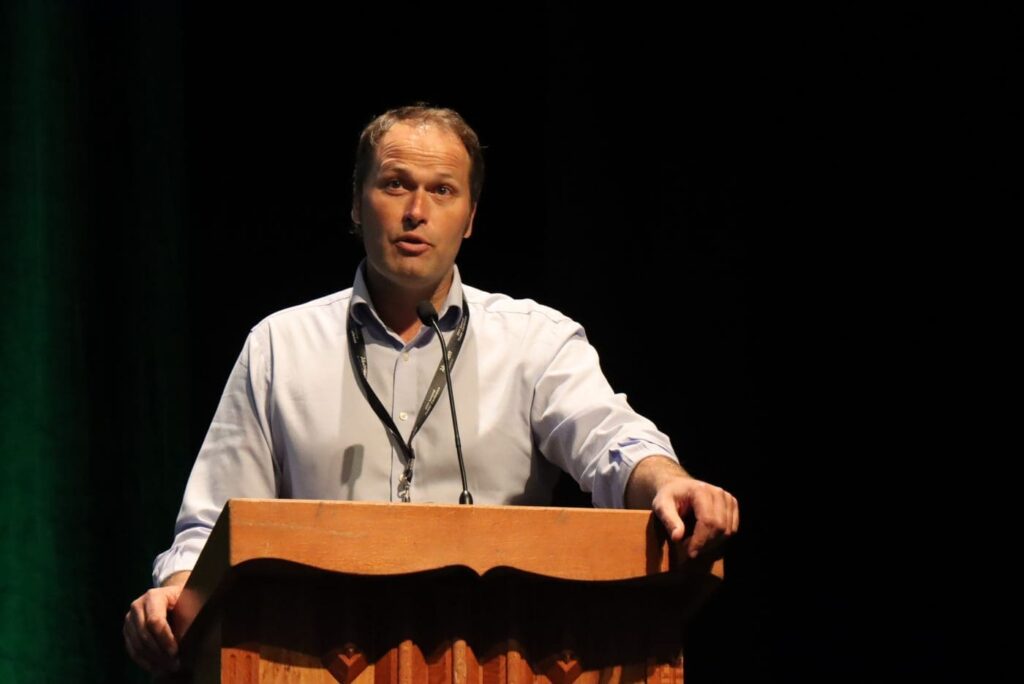The Australian economy is at an uncertain “holiday in the road” moment and its outlook is likely to hinge on the outcome of next week’s all-important inflation reading and subsequent Reserve Bank meeting in August, Deloitte has warned. .
The critical point will be the release of consumer price index results next Wednesday, which will feed into the RBA’s August meeting which some economists predict could bring another interest rate hike to lower inflation. constant in the economy.
“Two clear alternatives are possible, and each would set very different trajectories for our economy over the next year,” Deloitte Access Economics partner Stephen Smith said in the company’s latest Business Outlook report.
“On one track, a high June quarter truncated average inflation score could force the RBA’s hand to raise interest rates once again in early August, further crushing household and business confidence and wiping out the benefits of tax cuts and real wage gains in the second half of 2024.
“On the other hand, the June quarter inflation result could be better, in line with the slower pace of growth in the Australian economy.
“This would see the RBA hold interest rates steady again next month, enabling households to lead a sustained recovery in economic growth in 2024-2025.”
Premier Anthony Albanese took the Deloitte report as an endorsement of his government’s policy, including the reworking of three state tax cuts.
“What that report says is that the revised labor tax cuts, compared to the Liberal tax cuts, where working Australians, many of them would simply have lost out, would not have received a dollar and others would they only got half of what they had.” now I’m getting it,” he said Thursday.
“This has been important for people and for people’s living standards. So I’m really proud.”
Fears of another rate hike and the negative effect of the flow of economic activity have escalated following a hotter-than-expected CPI print on June 26.
The ABS reported that monthly CPI had risen to 4 percent in the year to May, from 3.6 percent in April.
Economists had expected a more modest increase of 3.8 percent.
Deutsche Group chief economist for Australia Phil O’Donaghoe said at the time that the shock increase was likely to prompt the Reserve Bank of Australia to raise rates in August by 25 bps to 4.6 percent.
But Deloitte partner and co-author of the report, Cathryn Lee, said she believed the RBA would not raise rates.
“We believe that interest rates will neither rise nor should they rise from current levels and that has been our consistent view for some time, for a number of reasons,” she said.
“First, interest rates at their current level are restrictive.
“Secondly, inflation is pulling back towards target, although not as quickly as might have been expected.
“Third, further increases in interest rates are unlikely to dampen price growth any more meaningfully than they would otherwise.
“And finally, the rise in post-pandemic inflation hit Australia later than it hit other economies, and has therefore cooled earlier elsewhere.”
Deloitte warns that another rate hike could be the “straw on the camel’s back” given pre-existing weaknesses in the economy.
“Consumer and business confidence remains low, household budgets have been decimated by widespread cost-of-living pressures and insolvency has increased,” the opinion said.
“In that environment, Australians and Australian businesses looked forward to July 1 as the trigger for tax cuts and other relief.
“Having the RBA Board grab that relief as soon as it arrived would be a powerful blow.”
Deloitte expects economic growth of 1 percent in calendar year 2024 and growth of 1.7 percent when measured over the 12 months to June 2025.
Treasurer Jim Chalmers said the report confirmed the government’s economic plan was “fair and responsible”.
“We are fighting inflation and repairing the budget, without destroying an economy that is already soft,” he said.
“Fiscal policy is not a major determinant of prices in our economy, but our budget is helping to take some of the edge off inflation, which would be higher without our efforts.
“Inflation has moderated significantly since its peak, which was lower and later than in other countries, and the decline in core inflation has been faster here than in the US, Canada and the Eurozone.”
The outlook presents a mixed growth forecast for states and territories over 2024-2025.
Queensland, WA and Victoria are likely to grow by a relatively healthy 1.9 per cent, 1.7 per cent and 1.6 per cent, and the ACT is likely to grow by 2.8 per cent.
But NSW, Tasmania and South Australia will record tepid growth of 0.6 per cent, 0.4 per cent and 0.7 per cent, respectively.
The Northern Territory is expected to shrink by 3.5 percent.
The unemployment rate is expected to average 4.5 percent in 2024-2025 and the population is projected to grow by 418,000.
The outlook presents a mixed growth forecast for states and territories over 2024-2025.
Queensland, WA and Victoria are likely to grow by a relatively healthy 1.9 per cent, 1.7 per cent and 1.6 per cent, and the ACT is likely to grow by 2.8 per cent.
But NSW, Tasmania and South Australia will record tepid growth of 0.6 per cent, 0.4 per cent and 0.7 per cent, respectively.
The Northern Territory is expected to shrink by 3.5 percent.
The unemployment rate is expected to average 4.5 percent in 2024-2025 and the population is projected to grow by 418,000.

